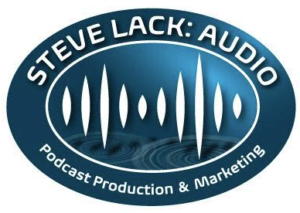Making Something Out of Nothing
Part Two: Structuring the Story
Author: Dan Bailes, WIFV Member
This new blog series by Dan Bailes will explore creativity, decision making, and problem solving in the process of fashioning videos, with a focus on client work and web videos.

Army 2nd Lt. Andrew Archer is framed by an arch at the citadel in Kirkuk, Iraq, on Oct. 15, 2007. Archer, of Delta Company, 2nd Battalion, 22nd Infantry Regiment, 1st Brigade Combat Team, 10th Mountain Division and civilians from the Kirkuk Provincial Reconstruction Team toured the historic site in Kirkuk. DoD photo by Staff Sgt. Dallas Edwards, U.S. Air Force. (Released)
The previous post dealt with fashioning John Cobb’s story and his “Mission that Matters.” John is developing a system to track the location of our troops in the field, so if one is separated from their unit, injured or killed in battle, they can be found and brought home. We had almost no video material to work with outside of his interview and a few shots of him talking with co-workers.
There are many ways of working and each project has its own issues and requirements. This one had to rely solely on comments from John’s interview — no written script or professional narrator.
So John’s words will have to set up the problem, personalize it, explain the issues, point to a solution, build to an ending, and create an emotional impact. Music and a creative visual treatment will help, but that’s for later. So without a clear visual direction, we began by editing John’s words to form the story’s spine.
For example, here’s a comment from John early in his interview:
Personnel recovery to me, personally, is ah, it’s a mission that is very personal, because I was there in a war zone when many of my fellow military members have gone missing. Some of them have not been recovered yet.
Your odds of survival are diminishing with each passing moment that you’re out there in a war zone and nobody knows where you are.
You can think about working with John’s words like writing a script. How do you start? What comes next? Then what? Re-ordering and editing is the way to get you there. And cutting out extraneous phrases and words to simplify and clarify. The tighter you make it, the more powerful the piece.
A good rule of thumb is start with something that grabs the viewer’s attention. By adding, subtracting and re-arranging, here’s how the video opens:
If you happen to go missing… your odds of survival are diminishing with each passing moment… that you’re out there in a war zone… and nobody knows where you are.
I was there when many of my fellow military members had gone missing… some of them have not been recovered yet… It’s always personal to me. Every day that I get up, I think about those people…
Pauses were added to create a little drama. Often people speak rather quickly and the ideas just flow by. When you edit, sometimes you want to catch those ideas and hold them for a moment. Pauses allow you to do that. And if you do them well, they help build emotion and give some punch to the ideas.

We’ve used John’s words to set up the problem he’s trying to address, followed by comments that personalize the issue. Now we can build a short overview of his project.
John:
The government has committed a lot of resources to build a personnel recovery program. What we are building to, is a smarter program. So that when there is an event that triggers the loss of a military person, or a civilian person for that matter, all of those resources are brought to bear as quick as possible. And the communication will flow seamlessly across all the elements that have got to touch that.
It’s a little dense, but he explains what he’s doing in a way that echoes the problem he stated at the beginning of the piece. We hear the goal, learn what he’s trying to accomplish, and understand what remains to be done.
With that, we’re ready to leave the facts behind and get deeper into his passion and motivation. Making it personal is another way to build emotion and create a little drama.
We have an ethos in the Army that basically says I will leave no fallen comrade behind… behind period… it doesn’t matter how much time has passed…

U.S. Army soldiers of 1st Stryker Brigade Combat Team, 25th Infantry Division patrol a section of Iraq’s Diyala River Valley on Dec. 27, 2008. DoD photo by Petty Officer Walter J. Pels, U.S. Navy. (Released)
Let’s talk for a minute about the challenge in presenting information and creating an emotional impact.
Because these short pieces work best when they create an emotional connection, it’s important to build rapport with the viewer. Rapport creates a foundation for offering information. Once your viewer feels that connection, they’re ready to hear what you want to tell them. If you offer enough information to help them feel grounded – to have a sense of context – then you can turn your efforts to cementing the emotional bond. Without that connection, the information becomes boring rather quickly.
When it comes to information, it’s about quality rather than quantity. Less is more.
A few more thoughts about editing words. Often, when people express themselves they start with an idea, explain it and then repeat or sum up what they just said. So after the best bites are culled from an interview and put in a rough order, go through them and delete qualifying statements, repetitive phrases, elaborations and false starts that get in the way of clarity.
The ear processes information differently than the eye. The ear is linear, which is why simplicity and clarity are so important. You want the ideas to develop seamlessly, one to the next to the next. You’re building a story block by block, scene by scene.
To ensure the edits don’t distract, listen to the track with your eyes closed and just pay attention what you hear. If you can hear the edits, work on them until they flow right by. Then they won’t distract from what’s being said. Listening with eyes closed is also a great way to feel how the ideas are coming across.
Here’s John’s edited story with music but without the visuals. We’ll talk about developing a visual treatment in the next post.
About the Author: Dan Bailes, WIFV Member
Expert at transforming complex issues into compelling stories, Dan Bailes began his career editing film and later video. He spent 15 years creating issue advocacy and marketing media for trade associations and corporations and political media for national and state-wide campaigns for both Republican and Democratic candidates. Dan also served as executive editor and writer on a seven-part international co-production exploring the economic and cultural development of emerging Asian nations. He’s made award-winning documentaries for PBS, trade associations and educational organizations, and was co-creator, co-producer and writer for Medical Economics Video Magazine, a quarterly program on the business and practice of medicine that aired on Lifetime Television.

















